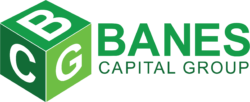Show Stoppers, Eve Poppers, and Job Hoppers
The FOMC did not disappoint with their November statement. They held on to their favorite ‘T’ word. However, this time they modified the usage a bit in saying that inflation was elevated but “largely reflecting factors that are expected to be transitory.” The newly–modified ‘factors’ was altered from previous statements where transitory described inflation to instead shift the emphasis to the forces behind higher prices. This time the Fed was still holding on to their contention that the situation was still temporary in stating the factors of “supply and demand imbalances” and “reopening of the economy” were the driving forces “expected” to be only temporary. The Bond Market Review believes inflation has ‘dug in’ and will not be easily reversed – nor will the currently contributing factors.
If anything, inflation is at the highest rates in 30 to 40 years – and still heating up! The Biden administration’s new stimulus plan has been passed and claims were made that the $1.75 trillion package would combat inflation. Some things just don’t make sense – or add up. They also said there would be no cost to the package. Without going into great detail, the non–partisan Congressional Budget Office sided with our disbelief on that claim. The CBO will release their analysis of the expected costs of the Build Back Better Act later this week.
We remember well the misery of the high inflation during the late ‘70s and early ‘80s. Treasury Secretary Janet Yellen said the persistent inflation of that era occurred “because people thought that policy makers wouldn’t bring it to an end, and inflation expectations became embedded in the American psyche.” She contended: “That isn’t happening now – and the Federal Reserve wouldn’t permit that to happen.” Are we to believe that this Fed is smarter than in those days of yore? If anything, we’ve spent an extended period now in denial of real inflationary forces and this Fed has yet to act. If they really had control (then or now), they’d do something. The main difference in recent years has been the more–recent Fed’s willingness to ‘nose dive’ rates to zero.
Quick Links
Looking Ahead
- Equity cycles have trend–change highs due near November 3rd and 9th with weakness into December.
- Bond yields should have lows near November 10th–12th – around the Veterans Day holiday (11/11).
- The FOMC will update their interest–rate policy with their statement on Wednesday (11/03) at 2 m. ET.
The FOMC statement said that: “Progress on vaccinations and an easing of supply constraints are expected to support continued gains in economic activity and employment as well as a reduction in inflation.” Another thing we haven’t noticed is any appreciable easing in supply constraints. Nevertheless, the committee laid out its tapering plans for asset purchases. QE remains – and will over the coming months, but the pace of purchases will diminish. They said Treasury purchases would drop by $10 billion to $70 billion per month and purchases of Agency mortgage– backed securities would fall by $5 billion per month to $35 billion per month. They said that same pace of reduction would take place until QE is exhausted – but they would alter that schedule if “warranted by changes in the economic outlook.” The committee said the tapering of QE was possible “in light of the substantial further progress the economy has made toward the Committee’s goals since last December.” The vote was unanimous. The stock market has been addicted to the Fed’s QE programs. While the Fed would like to avoid the tantrums of QE reductions from the past, addicts seldom yield quietly. Markets that have been subsidized by Fed policy and money printing won’t like the removal of that support. The ‘show’ is stopping soon – and rate hikes will follow. If the Fed fails to fight inflation or acknowledge better jobs and better growth – they run the risk of losing credibility. If they raise too quickly and by too much, the country’s debt service will skyrocket and bring forth even more debt ceiling showdowns.
Fed Chair Jerome Powell has maintained a dovish outlook but some FOMC members are turning away from that posture. St. Louis FRB President James Bullard suggested the Fed could also begin to allow their balance sheet to roll off as holdings mature. He said that strategy beyond the end of QE “would be a way to have a somewhat more hawkish policy than otherwise.” The Fed’s balance sheet exceeds $8.6 trillion at present. Bullard said: “I think it behooves the committee to go in a more hawkish direction … so we are managing the risk of inflation appropriately.” The White House is expected to announce the next nomination for Fed Chair very soon. Powell and Fed Governor Lael Brainard are said to be the top choices. Brainard is possibly more dovish than Powell – and speculated to be more friendly to emerging markets. Either should gain approval without great difficulty.
Inflation has been eye–popping and jaw–dropping. The annual rate of inflation in October rose from 5.40% to 6.20%. That’s the highest pace since 1990 and consumers are feeling the pinch in rent, gasoline, and food. San Francisco FRB President Mary Daly said the inflation data was “eye–popping.” At least that sounds like it finally got her attention! However, Minneapolis’ Neel Kashkari is against overreacting to what he still sees as “temporary factors.”
There are numerous factors at work that the BMR sees as ‘sticking.’ The job market is the tightest it’s been since the ‘50s. That’s pushing wages higher and driving inflation upward. In September, there were roughly 2.8 million more positions available than the number of unemployed workers. Job hoppers hit a record 4.4 million as the ‘quits’ rate also hit a record of 3%. Workers found opportunities to pick up income by jumping to alternative positions. Employers have offered incentives such as signing bonuses and higher wages to attract talent and fill positions.
Treasuries, Agencies, and MBS
The bond cycles had yields falling into Veterans Day and then reversing. Yields have risen since the 10th with 5– year rates this week their highest since February 2020. 30–year yields traded back near the July lows before pressing higher. Last week, yields rose by 11, 16.5, 11, and 4.5 bps for the 2, 5, 10, and 30–year Treasury sectors. Through today, yields were lower by 1 bps for 2–years, even at 5, and higher by 2 and 3.5 bps at 10 and 30–years. While the forces are present for higher yields, the cycles called for another high near November 18th/19th – followed by another trend–change low near November 26th/30th. We have some longer–term targets now for the 10–year note to go to 2.68% over the next year. We’re expecting 3.04% for 30–year bonds. We’ll update these targets as necessary.
Though rates have since risen, Freddie Mac 30–year mortgage rates had fallen for the past 2 weeks – dropping from 3.14% to 3.09% and then down to 2.98%. They just rose back above 3% to 3.10% this week. 15–year rates dropped from 2.33% to 2.35% and then to 2.27%. 15–year rates rose sharply this week to 2.39%. Q3 Mortgage Delinquencies fell from 5.47% to 4.88% and MBA Mortgage Foreclosures fell from .51% to .46%.
For the 68th month of October in a row, the U.S. Treasury had a deficit for the first month of the new fiscal year – with no major tax payments usually due that month. The budget statement revealed a $165.055 billion shortfall to kick off Fiscal 2022. That started out the new fiscal year 41.90% behind Fiscal 2021. These past 2 years have seen large swings with the numerous and large rounds of stimulus. The FOMC cited progress towards their goals as justification to begin tapering asset purchases. The Atlanta Fed’s GDP–Now forecast for Q4 2021 began at a healthy 6.6%. It’s been hovering since in the mid–8% range and was 8.2% as of November 17th (after having risen as high as 8.7% on the 16th). It’s important to note that Q3 also started above 6% at 6.1%. However, it dwindled to .2% for the last forecast as of October 27th and the preliminary ‘real’ first GDP reading for Q3 was 2.0%.
Foreign entities reduced U.S. holdings in September – selling out of equity positions. $26.8 billion flowed out of U.S. assets. Though debt investments increased by $26.3 billion, central banks were net sellers of U.S. Treasuries for a 5th month. Consumer Credit more than doubled from the August number to expand by $29.913 billion in September. Credit Card debt surged once again past $1 trillion for the first time since April 2020.
On Monday (11/08), the U.S. Treasury sold $56 billion 3–year notes at .75%. That was the highest awarded yield since February 2020 and demand fell slightly versus the October offering. The buying group that includes foreign central banks accounted for 57.6% of the supply versus a previous 44.2%. Dealers received the lowest allocation since November 2009. That Tuesday’s (11/09) $39 billion 10–year note auction brought 1.444%. Demand fell versus October and the auction was rated as ugly – with the lowest readings since December 2020. However, foreign buying fell only a slight .1% to a still–healthy 71%. Wednesday’s (11/10) 3–year bond offering was again poor with demand dropping versus October. $25 billion in supply brought 1.94%. Foreign buying fell from 70.5% in October to 59.0% of this auction. $23 billion 20–year bonds sold this Wednesday (11/17) for 2.065%. Demand improved to October – though foreign buying fell from 64.8% of the last issue to 60.2%. Next week’s auctions come early for Thanksgiving. On Monday (11/22), the Treasury will offer $58 billion 2–year notes and $59 billion 5–year notes. $59 billion 7–year notes will follow on Tuesday. Bond trading will close early on Wednesday and Friday – Happy Thanksgiving!
Economics
Job creation did not get in the Fed’s way of tapering asset purchases. ADP Employment Change beat expectations of 400K private–payroll jobs with a 571K increase – that proved to be a good predictor of October payrolls. Nonfarm Payrolls also beat expectations of 450K with a 531K increase. Private Payrolls grew by 604K (versus 420K expected). The 2–month revision was an addition of 235K jobs. Manufacturing added 60K jobs. The U.S. Unemployment Rate fell from 4.80% to a new pandemic–low 4.60%, and if there’s going to be a large negative effect from vaccine– mandate firings – it hasn’t shown up yet. However, those mandates have recently been suspended by court orders. OSHA was ordered to cease the firing requirements – leading the Biden administration to suspend enforcement. It was interesting that the CDC director refused to answer Senators on the vaccination status of their employees (earlier this month). The Underemployment Rate fell from 8.50% to 8.30% and the Labor Force Participation Rate remained at 61.60%. Challenger Job Cuts showed 71.70% less firings versus October 2020 – also affirming the better payrolls.
Average Hourly Earnings rose .40% in October. That set the year–over–year rate higher by .30% to 4.90% (which matched the University of Michigan survey). Average Weekly Hours fell .1 to 34.7. We’ll insert the CPI adjusted data here for comparison. Considering higher Consumer Prices, Hourly Earnings instead fell by 1.20%. Real Average Weekly Earnings were 1.60% lower. The number of available job positions fell from 10.639 million to 10.438 million in September. As that demand is 2.8 million over those unemployed, job hoppers have leverage and choices. A record 4.4 million workers quit jobs for better opportunities. That ‘quits’ rate at 3% was also a record back to 2000 – when data began.
Initial Jobless Claims have been tame – once again despite vaccine firings that occurred ahead of the court orders that stopped the process for now. Data has also been fairly steady with 4 single digit (albeit in thousands) results over the past 5 week. Claims fell by 12, 2, and 1K over the past 3 weeks to a new pandemic low of 268K. Continuing Claims fell by 138K, rose by 108K, and then fell by 129K over the past 3 weeks to 2.08 million – also a new pandemic low. However, the total number of Americans on government benefits just rose for the first time in 8 weeks – and once again is above 3 million.
Consumer Comfort has risen now for 3 weeks – increasing by 2.8 points to 50.7. The State of the Economy is down a slight .1 over that period. Personal Finances increased by 5.4 to 66.3 – the highest since early October. The Buying Climate improved by 3.2 points to 43.2 – also back near early October levels. Other readings were weaker. University of Michigan Sentiment fell to 11–year lows with a drop from 71.7 to 66.8. Current Conditions fell from 77.7 to 73.2 and Expectations dropped from 67.9 to 62.8. The increase occurred in expectations for inflation – which rose from 4.80% to 4.90% – also a primary reason for downturns in the sentiment surveys. NFIB Small Business Optimism fell from 99.1 to a 7–month low 98.2. A major concern there remains the lack of workers to fill available positions. Economic Optimism (IBD/TIPP) fell from 46.8 to 43.9. Their Economic Outlook survey dropped from 41.3 to 38.5 – each the lowest in many months. The ‘misery index’ is now the highest in decades (Unemployment Rate plus CPI).
Manufacturing is seeing some progress. The Philadelphia Fed Business Outlook rose from 23.8 to 39. Though Kansas City Fed Manufacturing Activity fell from 31 to 24, Empire Manufacturing (New York) also saw a pickup from 19.8 to 30.9. Prices Paid and Prices Received rose appreciably. October’s Leading Index rose .90% after only increasing by .10% in September. The country is recovering from the setback of Hurricane Ida. Factory Production rose 1.2% in October for the sharpest gain in 3 months. Industrial Production rose 1.60% to pre–Covid levels (following September’s 1.30% drop). Capacity Utilization jumped from 75.20% to 76.40%. Q3 Nonfarm Productivity had fallen by 5.00% (the highest drop in 40 years). Q3 Unit Labor Costs were 8.30% higher. September Factory Orders rose .20% and .70% ex transportation. Orders for Durable Goods fell .30% but rose .50% ex transportation. Business Investment (Capital Goods Orders) rose by .80%. The ISM Services Index surged 4.8 to a new high of 66.7.
Consumer Prices rose by a 4–month high .90% in October – taking the annual pace from 5.40% to 6.20% for the largest gain since November 1990. Adjusted for CPI inflation, stock yields are negative. Core CPI (ex food & energy) rose .60% accelerating the annual core pace from 4.00% to 4.60% – the higher since 1991! Food was up 5.3% for the highest pace since January 2009. The Fed’s Mary Daly called the readings “eye–popping,” These were terrible readings for the transitory crowd! Used car prices jumped 9.2% to record highs – with that index rising 38.1% versus last year. Producer Prices rose .60% which left the annual pace at a record 8.60%. Core PPI rose .40% – which also left the annual core pace at 6.80%. Some sectors were rising the most since 1975. In October, Import Prices rose 1.20% – accelerating the annual pace from 9.30% to 10.70%! Export Prices rose 1.50% – which elevated that annual pace from 16.50% to 18.00%! October Vehicle Sales rose from a 12.18 million–unit annual pace to 12.99 million.
Retail Sales surged by 1.70% in October for a 16.3% annual increase. The 1.7% rise was the best since March, and the 3rd straight increase. Ex autos, sales rose 1.70% as well. Products are mostly imported though as the Trade Balance deficit soared from $72.8 billion to a record $80.9 billion. Imports rose by .6% while exports fell by 3.0%. September Business Inventories rose .70%. Wholesale Inventories rose by 1.40% while Trade Sales rose by 1.10%.
Homebuilder Confidence was back on the upswing. The 3–point increase from 80 to 83 set optimism to the highest levels in over 6 months. Home prices are still rising more than double digits in most areas. Austin, Texas saw a 34% annual gain to lead the way. Single–family projects declined as Housing Starts fell .65% to an annual 1.52 million– unit pace in October. Building Permits rose 4.04% to a 1.65 million–unit annual pace.
Monday (11/22) is set for Existing Home Sales for October and the Chicago Fed National Activity Index. Tuesday follows with the Richmond Fed Manufacturing Index. Wednesday is loaded with pre–Thanksgiving offerings including MBA Mortgage Applications (which rose by 5.50% and then fell 2.80% over the past 2 weeks), jobless claims data, the merchandise trade deficit (Advance Goods Trade Balance), an update to Q3 GDP, Durable and Capital Goods Orders, Personal Income & Spending for October, final November University of Michigan confidence readings, New Home Sales, the PCE Deflator, and the minutes from the FOMC meeting that concluded on November 3rd. The following Monday (11/29) brings Pending Home Sales for October and Dallas Fed Manufacturing Activity. Tuesday (11/30) wraps up November with housing prices and Conference Board Consumer Confidence.
Equities
Stocks made new highs into November 5th with higher closes on the 8th for the S&P and Nasdaq. The Dow Industrials established both on Monday the 8th. Our equity cycles expected weakness from November 9th into December 3rd – and that’s still the case. December 3rd could represent a buy opportunity but it’s too early to tell at this point. The Dow lost 227.64 points or .63% last week to 36,100.31. It’s off .64% this week. The S&P lost .31% but is .46% higher this week. The Nasdaq lost .69% but reversed .84% higher through today. The Dow Transports lost .50% last week and then tanked 1.57% through today. Bank stocks rose .62% last week but have fallen 1.41% so far this week. Stocks will close early next Friday for the holiday weekend but, unlike bonds, will trade normal hours on Wednesday.
Other Markets
Precious metals could trade down from a high this week into a low near December 10th. Crude Oil lost .59% last week and is down 2.20% this week. Commodities gained .89% but fell .31% through today. Gold gained 2.85% to the highest levels since June but is .38% lower this week. The U.S. Dollar rose .86% last week and gained .44% through today – reaching the highest levels since July 2020. The Japanese Yen fell .42% and lost another .32% this week – falling to 5–year lows. The Euro fell to 15–month lows with a 1.05% decline last week and a .65% drop this week. The markets are reacting to and expecting higher U.S. inflation, rate hikes, and rising Treasury yields. These factors are collectively somewhat Dollar friendly. Corn gained 4.39% last week but is .74% lower this week. Cotton rose .70% but is off .08% this week.
“Thanksgiving is a typically American holiday. … The lavish meal is a symbol of the fact that abundant consumption is the result and reward of production.” Ayn Rand
“I awoke this morning with devout thanksgiving for my friends, the old and the new.” Ralph Waldo Emerson
Doug Ingram, Financial Economist
Additional Information is Available on Request
Banes Capital Group, LLC (BCG) has been granted permission by the author, Doug Ingram and Strategic Technical Initiatives, to distribute this market commentary (MC). All views, opinions and estimates included are his as of this date – and are subject to change without notice. Mr. Ingram’s views, opinions, and estimates are not necessarily those of BCG and there is no implied endorsement by BCG of any of the information contained within this MC (which may in fact directly conflict with those being published and distributed by BCG, whether or not contemporaneous). In the event of such conflict, BCG is not under any obligation to identify to you any such conflicts. This MC is for informational purposes only and does not constitute a solicitation or offer to buy or sell any securities, futures, options, foreign exchange or any other financial instrument(s) and/or to provide any investment advice and/or service. Although the information presented has been obtained from sources believed to be reliable, we cannot guarantee or assume any responsibility for the accuracy or completeness of the information shown herein.







